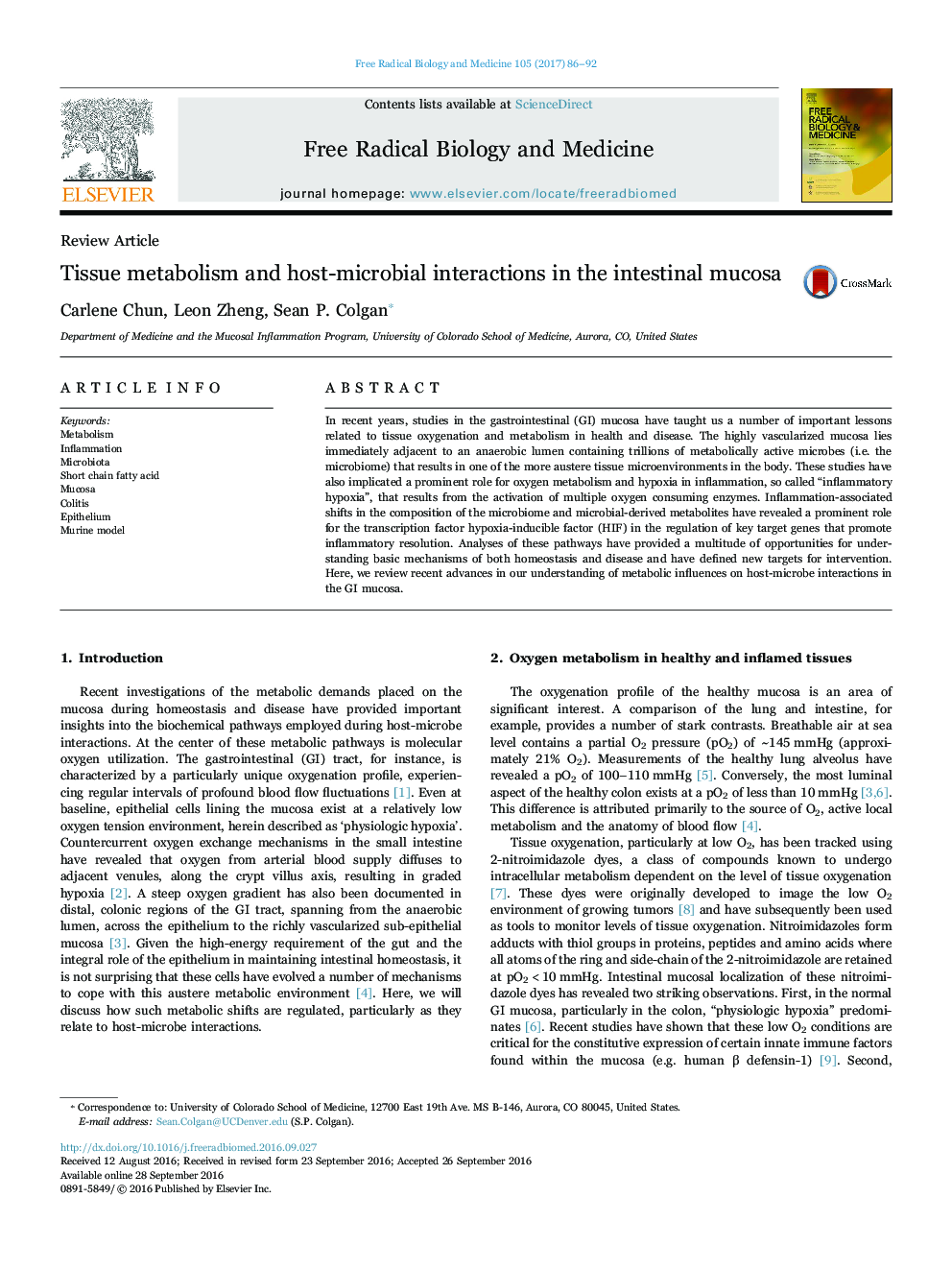| Article ID | Journal | Published Year | Pages | File Type |
|---|---|---|---|---|
| 5501941 | Free Radical Biology and Medicine | 2017 | 7 Pages |
â¢The intestinal mucosa exists in a state of low O2 during homeostasis, termed “physiologic hypoxia”.â¢Metabolic crosstalk between the microbiota and the host mucosa are important for homeostasis.â¢Shifts in the microbiota are commonly associated with inflammatory intestinal diseases.
In recent years, studies in the gastrointestinal (GI) mucosa have taught us a number of important lessons related to tissue oxygenation and metabolism in health and disease. The highly vascularized mucosa lies immediately adjacent to an anaerobic lumen containing trillions of metabolically active microbes (i.e. the microbiome) that results in one of the more austere tissue microenvironments in the body. These studies have also implicated a prominent role for oxygen metabolism and hypoxia in inflammation, so called “inflammatory hypoxia”, that results from the activation of multiple oxygen consuming enzymes. Inflammation-associated shifts in the composition of the microbiome and microbial-derived metabolites have revealed a prominent role for the transcription factor hypoxia-inducible factor (HIF) in the regulation of key target genes that promote inflammatory resolution. Analyses of these pathways have provided a multitude of opportunities for understanding basic mechanisms of both homeostasis and disease and have defined new targets for intervention. Here, we review recent advances in our understanding of metabolic influences on host-microbe interactions in the GI mucosa.
